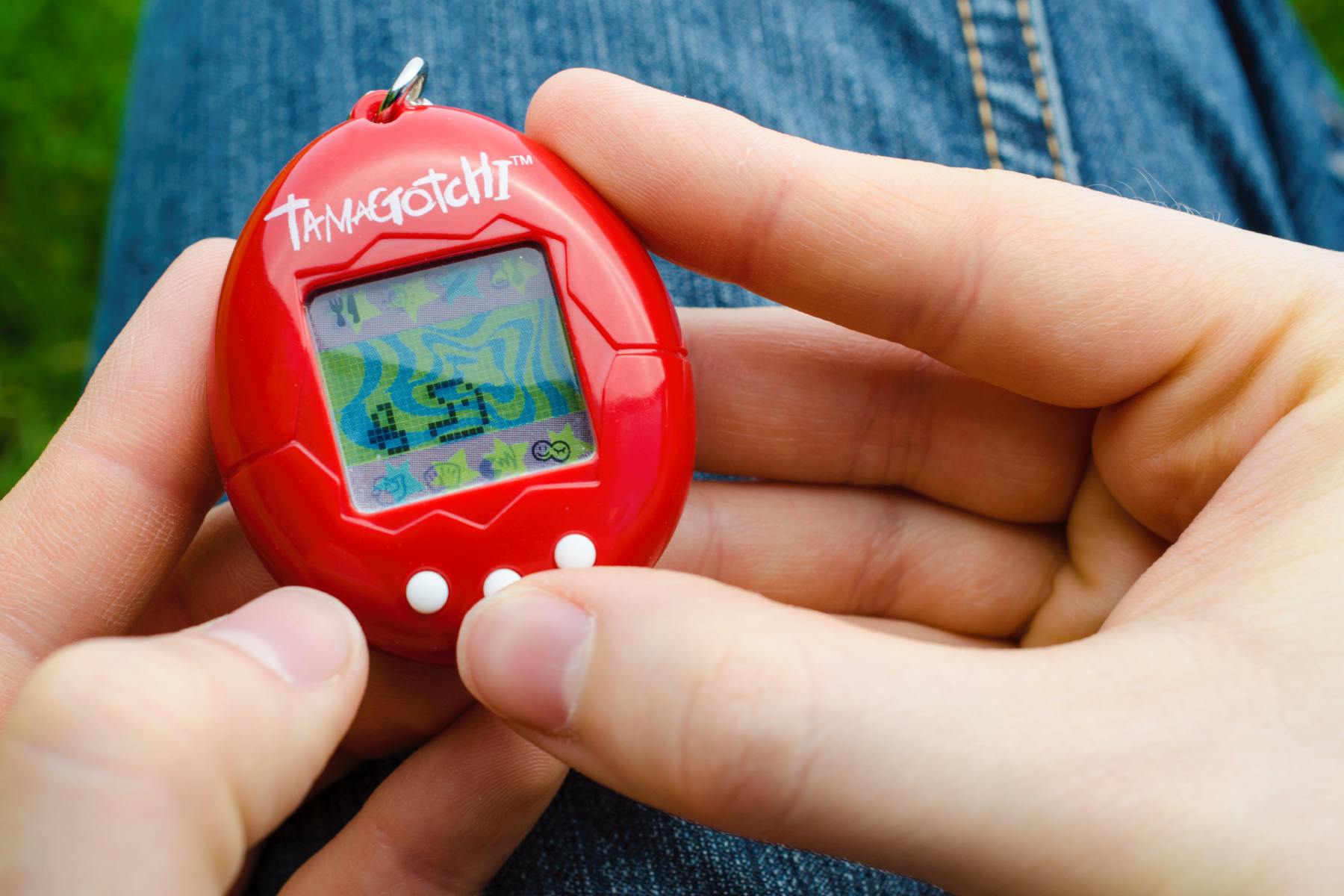Technology
Tamagotchi’s Legacy: Shaping Millennials for a Digital Age

The rise of personal media devices is deeply intertwined with the experiences of millennials, particularly those who grew up with digital pets like Tamagotchi. First introduced in Japan in 1996 by the toy company Bandai, Tamagotchi became a cultural phenomenon, selling 400 million units within just a year and a half. This early form of interactive technology not only entertained children but also laid the groundwork for their relationship with today’s digital devices.
Tamagotchi, along with similar toys like Giga Pets, featured small, egg-shaped plastic casings and monochrome screens. Users were required to engage regularly with these devices, responding to beeps and alerts to meet their digital pets’ needs. According to media scholar Machiko Kusahara, Tamagotchi represented a significant departure from traditional video games, focusing more on psychological engagement rather than visual realism. The toy’s success was rooted in its ability to evoke a sense of responsibility and attachment in users, which is echoed in the behavior of modern smartphone users.
From Digital Pets to Digital Dependence
The interaction patterns established by Tamagotchi continue to resonate today. Users learned to respond to their pets’ needs—feeding, cleaning, and playing—often shaped by alerts that required immediate attention. This cycle of care created an emotional bond that is strikingly similar to how people now interact with their smartphones. Akihiro Yokoi, the toy’s inventor, noted in 1997 that caring for Tamagotchi fostered a sense of love and attachment, an experience mirrored in our connections with modern technology.
This relationship is further analyzed by theorist Wendy Hui Kyong Chun, who describes the “creepiness of new media” as devices demand attention yet appear responsive to their users. Notifications and alerts often interrupt daily life, positioning devices as engaged companions. Chun formulated the equation “Habit + Crisis = Update” to explain how users frequently react to device prompts, further deepening their connection to technology.
Sociologist Sherry Turkle emphasizes that the nurturing aspect of caring for digital pets is a catalyst for forming emotional attachments to technology. The care required for Tamagotchi and similar toys introduced a form of companionship that many users now experience with their smartphones. The demands of these devices create a nurturing environment where users feel responsible for their functionality, leading to a unique bond.
The Evolution of Digital Interactions
As technology has evolved, so too have the dynamics of user-device interactions. The emergence of social media platforms, particularly Facebook, has transformed these relationships. In 2007, Facebook launched the Facebook Platform, allowing developers to create applications like SuperPoke! Pets. These virtual pets required users to engage daily, nurturing relationships that echoed the responsibilities users had with their Tamagotchis.
The mechanics of these interactions reveal a shift in how users perceive their devices. Just as Tamagotchis required consistent care to thrive, modern applications demand ongoing engagement, fostering a similar emotional investment. Developmental psychologist Alison Gopnik posits that caring for digital entities fosters relationships that expand the self, a concept that applies equally to both virtual pets and smartphones.
While early criticisms of Tamagotchi highlighted the potential for unhealthy attachments, these toys inadvertently prepared a generation for the demands of contemporary technology. The need for constant updates, notifications, and interactions has become the norm, shaping how millennials navigate their digital lives.
In conclusion, the legacy of Tamagotchi extends beyond mere nostalgia. It has fundamentally influenced how millennials interact with technology, creating a culture of responsiveness and emotional investment that is evident in today’s digital landscape. As personal devices continue to evolve, the lessons learned from these early digital pets remain relevant, prompting users to reflect on their relationships with the technology that permeates their lives.
-

 Lifestyle2 months ago
Lifestyle2 months agoWinnipeg Celebrates Culinary Creativity During Le Burger Week 2025
-

 Health2 months ago
Health2 months agoMontreal’s Groupe Marcelle Leads Canadian Cosmetic Industry Growth
-

 Science2 months ago
Science2 months agoMicrosoft Confirms U.S. Law Overrules Canadian Data Sovereignty
-

 Education2 months ago
Education2 months agoRed River College Launches New Programs to Address Industry Needs
-

 Technology2 months ago
Technology2 months agoDragon Ball: Sparking! Zero Launching on Switch and Switch 2 This November
-

 Technology1 week ago
Technology1 week agoDiscord Faces Serious Security Breach Affecting Millions
-

 Science2 months ago
Science2 months agoTech Innovator Amandipp Singh Transforms Hiring for Disabled
-

 Technology2 months ago
Technology2 months agoGoogle Pixel 10 Pro Fold Specs Unveiled Ahead of Launch
-

 Science2 months ago
Science2 months agoChina’s Wukong Spacesuit Sets New Standard for AI in Space
-

 Technology2 months ago
Technology2 months agoWorld of Warcraft Players Buzz Over 19-Quest Bee Challenge
-

 Education2 months ago
Education2 months agoAlberta Teachers’ Strike: Potential Impacts on Students and Families
-

 Technology2 weeks ago
Technology2 weeks agoHuawei MatePad 12X Redefines Tablet Experience for Professionals
-

 Business2 months ago
Business2 months agoDawson City Residents Rally Around Buy Canadian Movement
-

 Business2 months ago
Business2 months agoNew Estimates Reveal ChatGPT-5 Energy Use Could Soar
-

 Science2 months ago
Science2 months agoXi Labs Innovates with New AI Operating System Set for 2025 Launch
-

 Technology2 months ago
Technology2 months agoInnovative 140W GaN Travel Adapter Combines Power and Convenience
-

 Technology2 months ago
Technology2 months agoFuture Entertainment Launches DDoD with Gameplay Trailer Showcase
-

 Technology2 months ago
Technology2 months agoGlobal Launch of Ragnarok M: Classic Set for September 3, 2025
-

 Technology2 months ago
Technology2 months agoNew IDR01 Smart Ring Offers Advanced Sports Tracking for $169
-

 Business2 months ago
Business2 months agoBNA Brewing to Open New Bowling Alley in Downtown Penticton
-

 Technology2 months ago
Technology2 months agoArsanesia Unveils Smith’s Chronicles with Steam Page and Trailer
-

 Science2 months ago
Science2 months agoNew Precision Approach to Treating Depression Tailors Care to Patients
-

 Technology2 months ago
Technology2 months agoHumanoid Robots Compete in Hilarious Debut Games in Beijing
-

 Health2 months ago
Health2 months agoGiant Boba and Unique Treats Take Center Stage at Ottawa’s Newest Bubble Tea Shop










